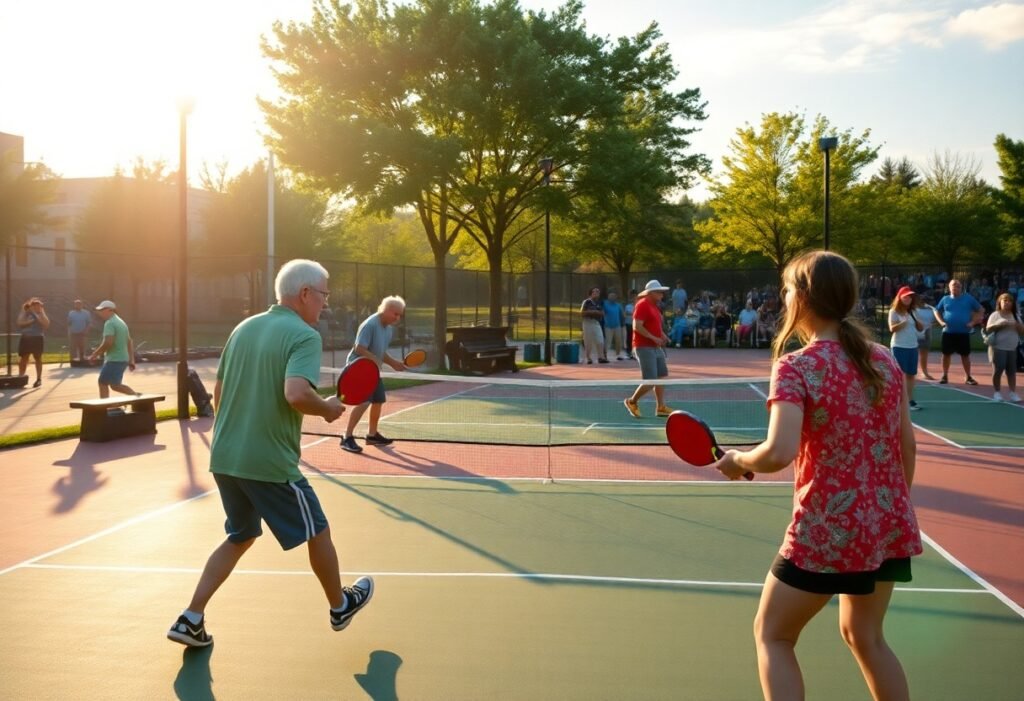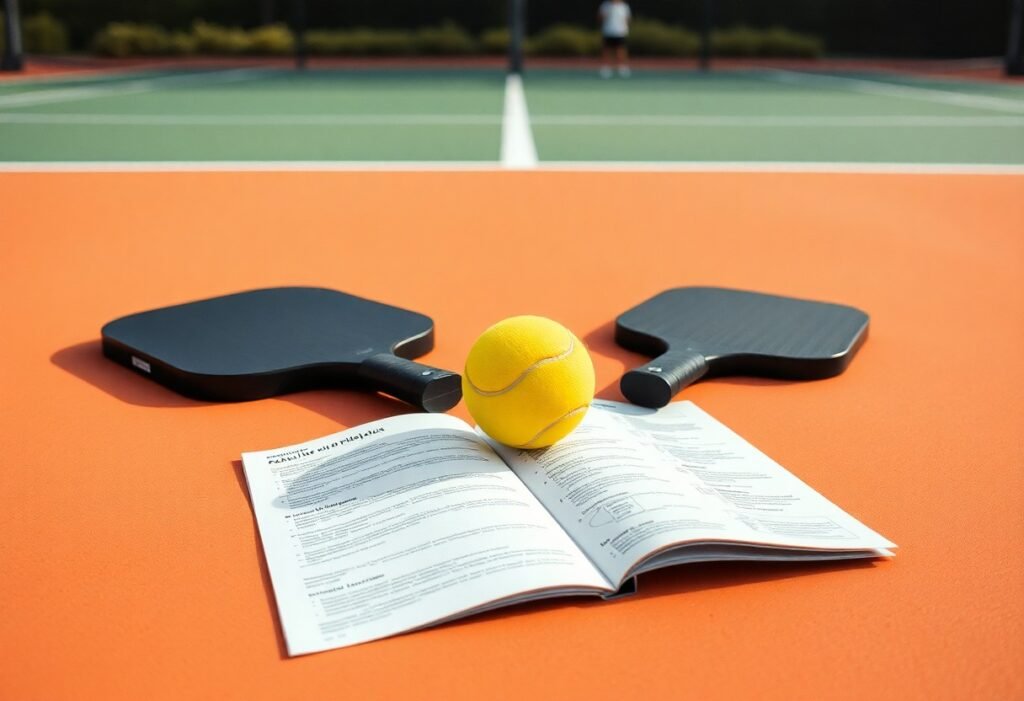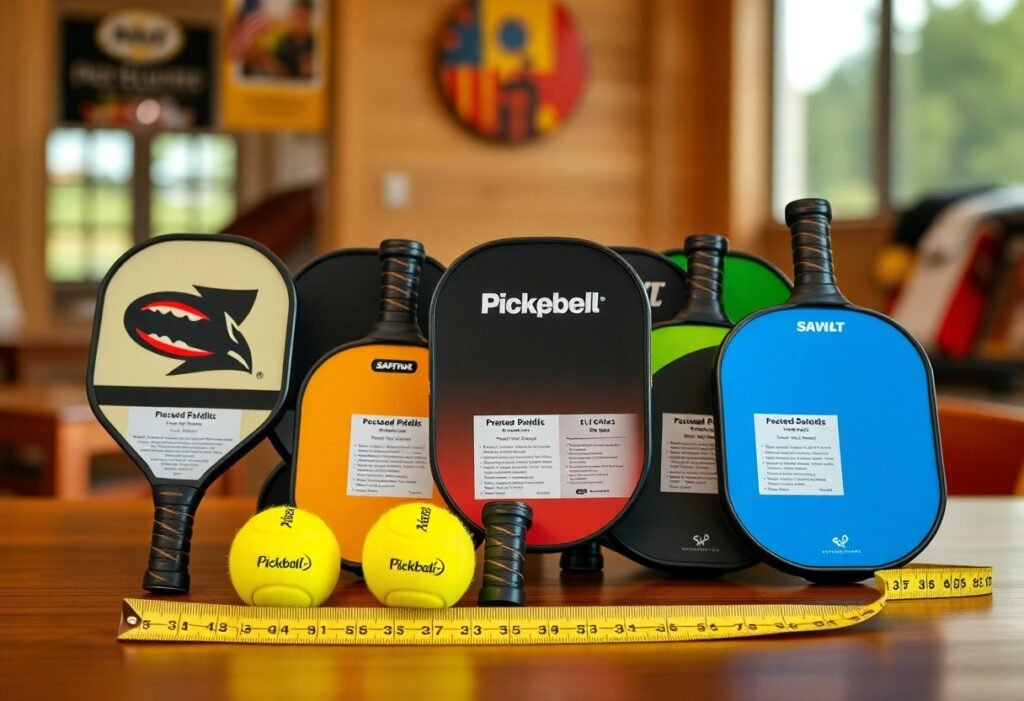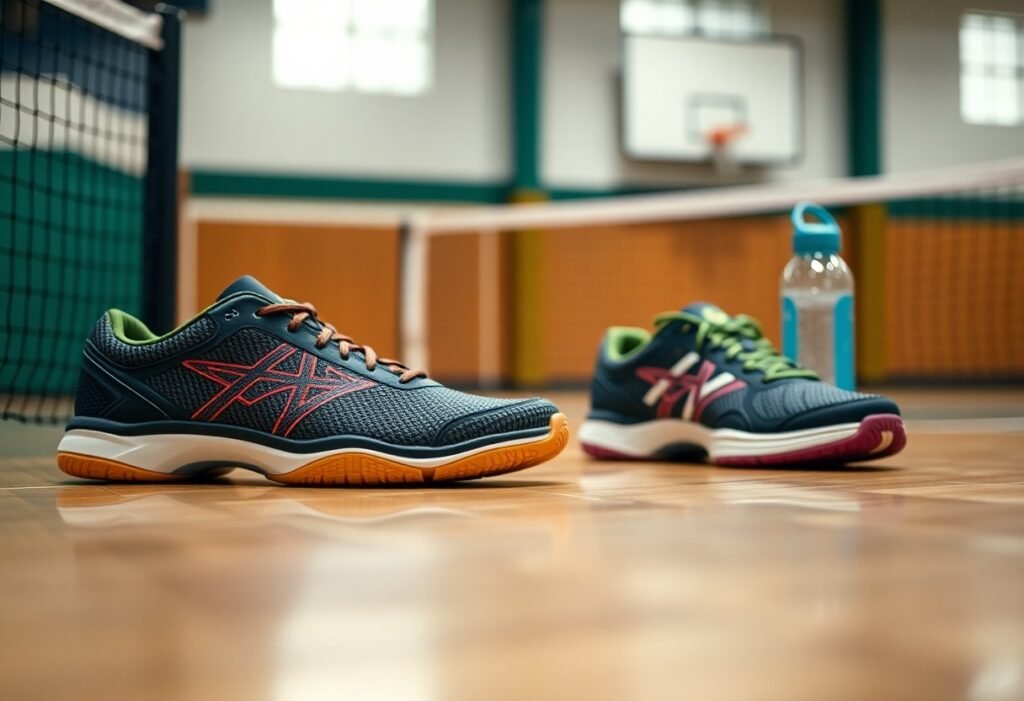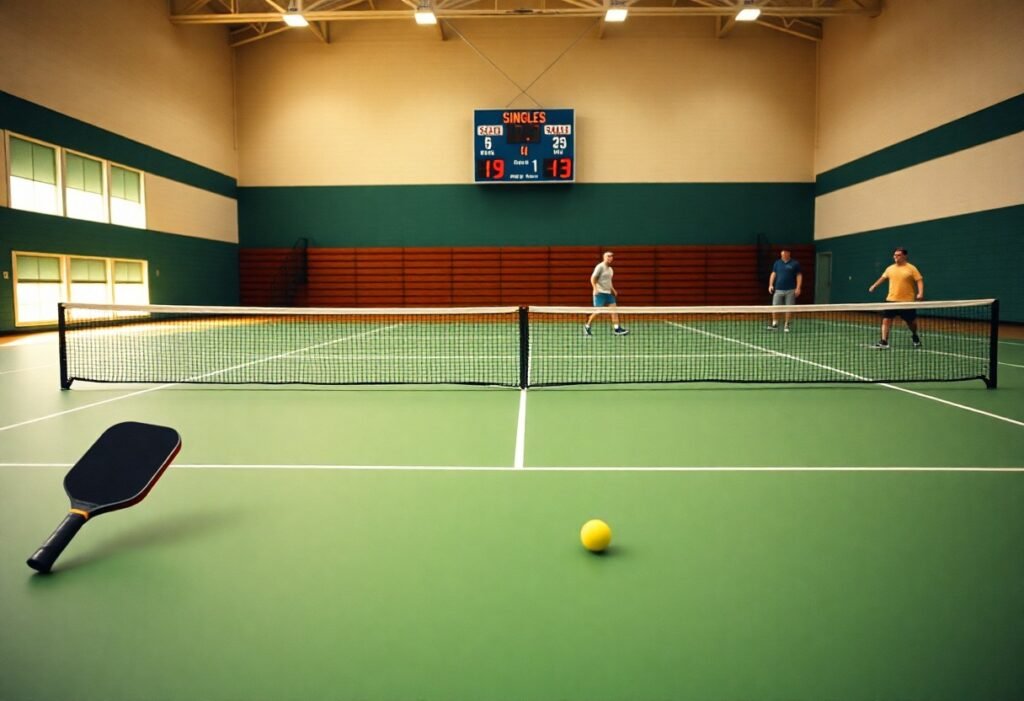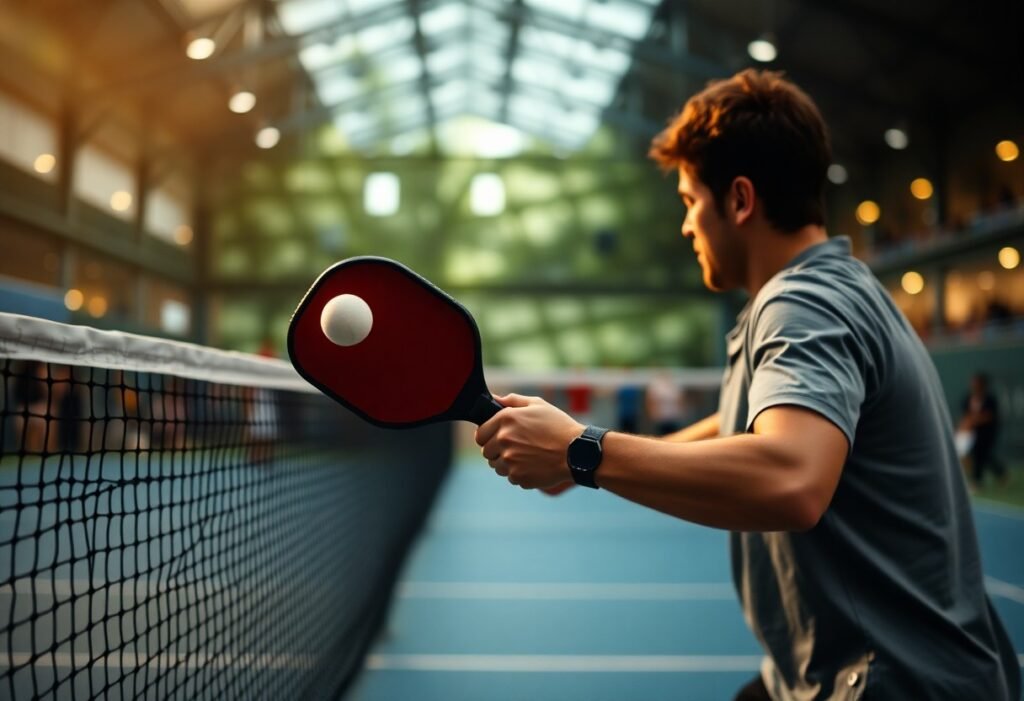Improve Footwork in Pickleball to elevate your game and move around the court with speed and precision. Effective footwork allows you to reach shots more efficiently, maintain better positioning, and stay one step ahead of your opponent. By practicing targeted drills, you can boost your agility and quickness without any specialized equipment. This guide shares practical exercises you can do anywhere, helping you sharpen your skills and take your pickleball performance to the next level.

Key Takeaways:
- Incorporate agility drills such as ladder drills and cone exercises to enhance speed and coordination on the court.
- Focus on shadowing movements and practicing foot placement to build muscle memory and improve reaction time.
- Utilize resistance bands during footwork drills to increase strength and stability in your legs and footwork mechanics.
Understanding the Importance of Footwork in Pickleball
Tips on Why Footwork Matters
Effective footwork can drastically elevate your pickleball game by allowing you to position yourself optimally for every shot. Strong footwork helps you respond quickly to your opponent’s actions and enables better balance during intense rallies. Key benefits include:
- Faster reaction times
- Improved shot accuracy
- Increased stamina
- Enhanced court coverage
This means you’ll not only respond better but also sustain your performance longer on the court.
Factors Influencing Effective Movement
Your footwork effectiveness is influenced by multiple factors, including your body alignment, core strength, and even your mental state. Pay close attention to how you position your feet for balance and power. Specific elements include:
- Body alignment
- Core stability
- Foot placement
- Mental focus
The right combination of these factors can significantly enhance your movement efficiency during play.
In pickleball, your ability to move effectively influences how well you can handle various shots and respond to your opponent. A stable core aids balance and stability, while precise foot placement directly impacts your agility. Additionally, maintaining strong body alignment enables you to react faster and make more powerful shots. The mental aspect cannot be overlooked; being focused allows you to anticipate plays and move strategically.
- Anticipation of plays
- Spatial awareness
- Quick decision-making
- Adaptability to the game flow
The interplay of these factors creates a dynamic where your footwork can dictate the pace and outcome of a match.

Basic Footwork Techniques
The Ready Position: Foundations of Movement
The ready position is your starting point for effective footwork, enabling quick reactions to incoming shots. Stand with your feet shoulder-width apart, knees slightly bent, and weight balanced on the balls of your feet. Hold your paddle in front, prepared for any direction of play. Maintaining this stance improves your stability and sharpens your agility, setting the stage for successful movement toward the ball.
Lateral Movement: Side-to-Side Drills
To enhance lateral movement, practice side-to-side drills that focus on agility and balance. Stand in your ready position and shuffle laterally, keeping your feet roughly shoulder-width apart. Use short, quick steps rather than wide strides to improve your ability to navigate the court efficiently.
Incorporate cone drills by placing two cones five feet apart. Move back and forth between the cones, maintaining a low center of gravity. As you shuffle, focus on facing the net and positioning your paddle for potential returns. Time yourselves during these drills to track improvement, aiming to reduce the time taken as you become more agile.
Forward and Backward Steps: Transitioning Quickly
Mastering forward and backward steps is vital for transitioning quickly between shots. Start in the ready position and push off with your back foot to step forward, followed by the front foot to close the gap. For backward movement, engage your core and step back with control, ensuring you remain balanced and ready to respond to the ball.
To sharpen this skill, set up a target on the court and practice approaching and retreating to it. Focus on smooth, deliberate steps rather than rushing, which can lead to missteps. As you gain comfort, introduce shot variations to simulate actual play scenarios, thus combining movement with tactical execution.

Drills to Enhance Footwork Anywhere
Shadowing Drills: Practicing Movement Without a Ball
Shadowing drills involve mimicking the movements you would make during a pickleball match without the ball. Stand in your ready position and practice lateral movements, forward and backward steps, and pivots while visualizing gameplay scenarios. Focus on maintaining balance and proper foot placement, which can dramatically improve your court awareness and responsiveness.
Cone Drills: Improving Agility and Speed
Cone drills are imperative for enhancing your agility and speed. Set up cones in various formations, like straight lines or zigzags, and perform drills that require quick changes in direction, gradually increasing your pace. These exercises help you develop muscle memory, allowing for faster and more efficient movements during actual play.
To perform cone drills effectively, place five cones about three feet apart. Start at the first cone and sprint to the second, making a sharp turn to dash to the third. Repeat this process, focusing on minimizing your downtime between each transition. This drill activates your fast-twitch muscles, increasing your overall speed and agility on the court, imperative for executing quick plays.
Ladder Drills: Quick Steps and Coordination
Ladder drills enhance your foot speed and coordination. Lay a speed ladder flat on the ground or use chalk to draw one. Practice fast, short steps in and out of the boxes, emphasizing quick foot placement and rhythm. These drills sharpen your reaction time, vital for positioning yourself effectively during matches.
Incorporating ladder drills into your routine can significantly benefit your pickleball performance. Start with simple foot patterns like the “basic in-and-out” and progress to more challenging sequences such as lateral shuffles or crossover steps. By consistently challenging your coordination, you’ll not only improve your footwork but also increase your overall agility, making you a more dynamic player on the court.
Footwork Drills for Specific Shots
Serving: Positioning for Success
Effective serving begins with proper foot positioning. Stand with your feet shoulder-width apart, ensuring your weight is distributed evenly. This stance allows you to shift your weight forward as you make contact with the ball, promoting better power and accuracy. Practice this positioning regularly to build muscle memory, ensuring you are always ready to serve effectively.
Dinking: Quick Adjustments to Reach the Ball
Dinking requires rapid feet movement and positional adjustments. Keep your feet light and ready to pivot, enabling you to reach low shots quickly. Focus on staying on the balls of your feet and maintaining a low center of gravity for optimal balance when engaging in dinks.
Volleys: Anticipating the Opponent’s Movements
To excel at volleys, you must stay alert and anticipate your opponent’s next move. Position yourself strategically by keeping your knees slightly bent, ready to spring into action. This enables you to respond quickly, reinforcing your ability to intercept the ball effectively.
Anticipating movements during volleys is enhanced by observing your opponent’s body language and paddle position. As they prepare to hit, watch for signs of where the ball is headed. Practicing this skill will improve your reaction time, elevating your performance during high-stakes plays and allowing you to seize every opportunity on the court.
Incorporating Footwork into Game Scenarios
Playing Against a Wall: Solo Practice Techniques
Utilizing a wall for solo practice enhances your footwork by allowing you to hit the ball repeatedly while focusing on movement. Stand about ten feet away and practice your shots, ensuring you move laterally and forward after each hit. This drill encourages quick adjustments and helps you develop rhythm and timing, vital for game scenarios.
Partner Drills: Real-Time Reaction Training
Real-time reaction training with a partner can elevate your footwork significantly. Set up specific scenarios where your partner hits the ball to various areas of the court. This requires you to move quickly, adjust your stance, and maintain balance — all vital for effective play under pressure.
Working with a partner allows for dynamic drills that mimic game situations. As your partner directs shots around the court, focus on staying light on your feet and responding swiftly. You can introduce variations, such as alternating between power and finesse shots, to challenge your footwork and reaction time further, ensuring you adapt quickly during actual matches.
Game Situations: Keeping Footwork Fluid
Incorporating footwork into real game situations keeps your movement fluid and adaptable. During play, focus on maintaining an athletic stance and being prepared to shift your weight as the ball approaches. Consistently practice pivoting and side-shuffling to improve how you respond to various ball placements, which is key for executing effective shots.
Your footwork should be an ongoing adjustment throughout each match. As you anticipate your opponent’s shots, position yourself accordingly while remaining ready to move quickly to the next location. Practicing situational drills that simulate different match conditions will train you not just to react, but to move strategically and maintain control of your positioning, improving your overall game.
Monitoring Progress and Adjusting Techniques
Evaluating Your Footwork Performance
To truly understand your footwork performance, record your practice sessions. Utilize video analysis or feedback from a coach. By reviewing your movements, you can pinpoint areas needing improvement, such as speed, positioning, or agility. This evaluation allows you to notice progress over time and identify specific techniques that may not be working as effectively as you hoped. For inspiration, check out Pickleball Training: How Tap Dancing Can Improve Your ….
Setting Realistic Goals for Improvement
Establishing realistic goals is important for measurable improvement in your footwork. Break down your objectives into achievable milestones, such as increasing your agility by a certain percentage or reducing your reaction time during drills. This structured approach keeps you motivated and focused on incremental progress.
Consider short-term and long-term goals to maintain engagement. Short-term goals might involve mastering specific drills or enhancing your lateral movement within a month, while long-term goals could focus on consistently applying these skills during matches. Keep track of your achievements; even small victories contribute significantly to your overall development.
The Role of Feedback in Fine-Tuning Skills
Receiving feedback is vital in refining your footwork. Whether it comes from a coach, video reviews, or peer observations, constructive criticism allows you to recognize patterns in your movements that may need adjustment. Embrace feedback as a tool for growth rather than as an evaluation of your abilities.
Utilizing feedback regularly helps you identify not just what to improve but how to implement changes effectively. Actively seek input and use it to shape your practice sessions, ensuring you work on areas that truly enhance your game. Engage with fellow players or coaches to create a supportive environment for continuous skill refinement.
Final Words
Now that you have a variety of footwork drills at your disposal, you can incorporate them into your routine, regardless of your location. By practicing these techniques consistently, you’ll enhance your agility, positioning, and overall performance on the court. Focus on proper form and progression to ensure you’re building a strong foundation for your game. With dedication, you will see significant improvements in your footwork, allowing you to respond more effectively during matches and elevate your pickleball skills. Start today, and watch your game transform.
FAQ
Q: What drills can I do at home to improve my footwork in pickleball?
A: You can perform ladder drills, cone sprints, and shadowing movements specific to pickleball. Ladder drills improve agility, cone sprints enhance speed, and shadowing helps with foot positioning.
Q: How often should I practice footwork drills for pickleball?
A: Aim for at least three sessions per week, dedicating 20-30 minutes each time to focus on footwork drills. Consistency will lead to better muscle memory and improved performance.
Q: Are there specific footwork techniques for different pickleball shots?
A: Yes, for forehands and backhands, practice side shuffles and diagonal movements. For volleys, incorporate quick steps forward, and for serves, work on a balanced stance with proper positioning.
Q: Can footwork drills be combined with strength training?
A: Absolutely. Incorporate exercises like lunges, squats, and calf raises into your routine. This will enhance your leg strength and allow for better footwork on the court.
Q: What is the importance of agility in pickleball footwork?
A: Agility is vital as it enables quick changes in direction and response to opponents’ shots. Improved agility will enhance your overall mobility and effectiveness during matches.



